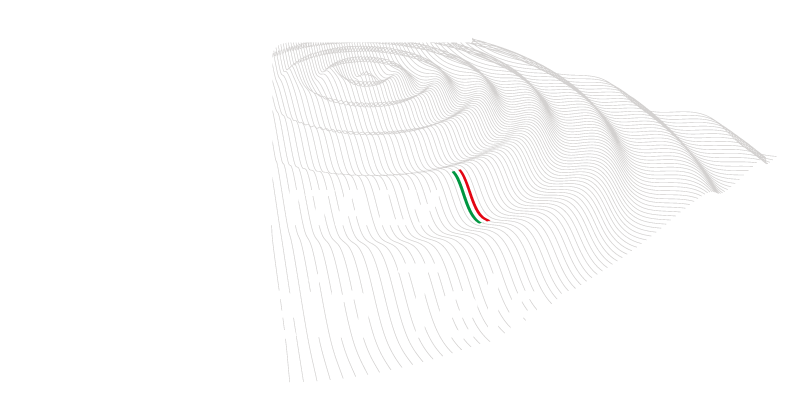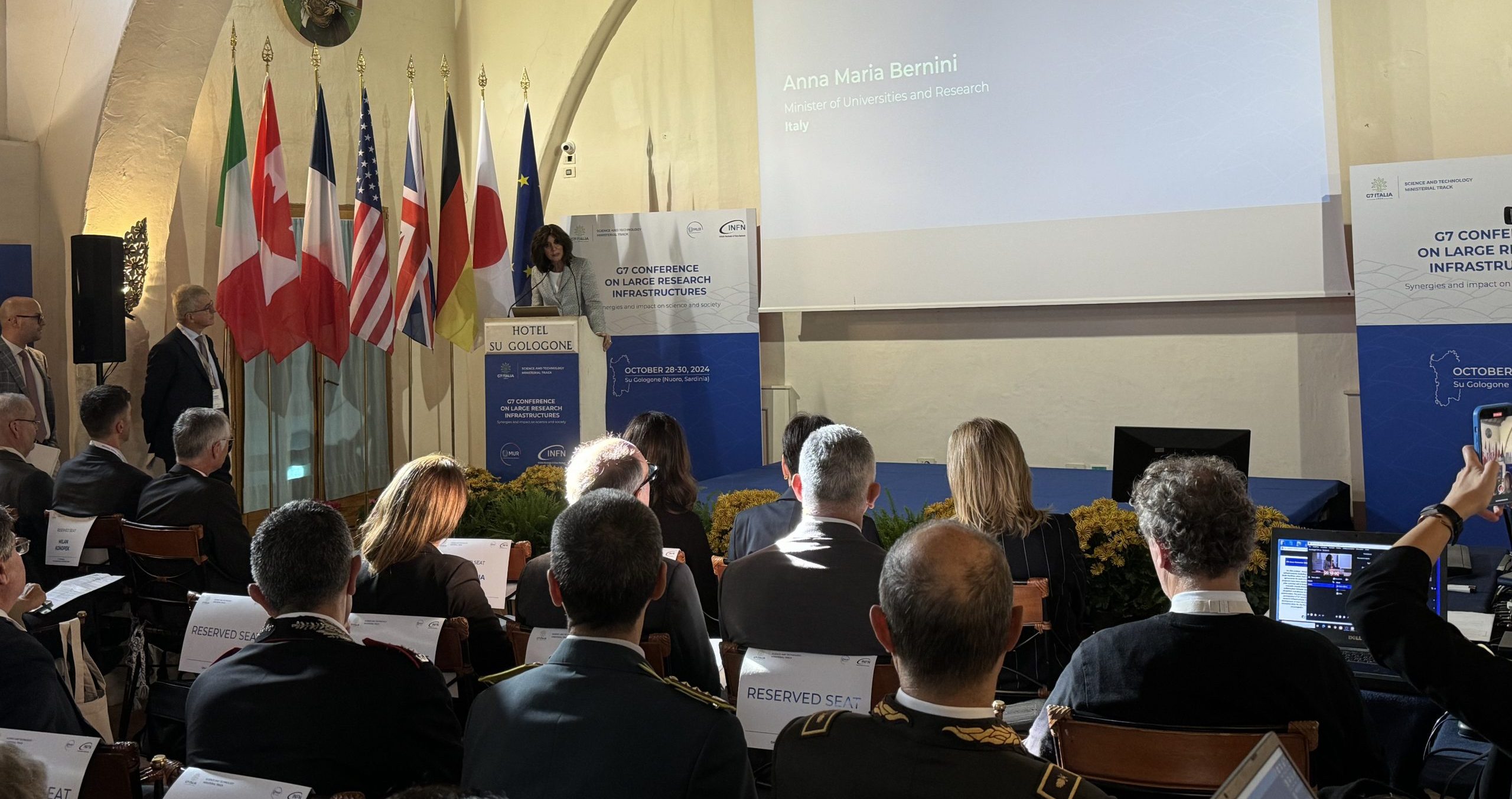Source: MUR/INFN, 29/10/24
The G7 Conference on Large Research Infrastructures. Synergies and impact on science and society begins. The conference brings together G7 ministerial delegates and representatives from European and global political and scientific institutions for a two-day discussion on research infrastructures. Hosted in Oliena, in the province of Nuoro, this event is promoted by the Italian Ministry of University and Research under Italy’s G7 Presidency and organized in collaboration with the Italian National Institute for Nuclear Physics (INFN). The event opened with greetings and institutional speeches by the Minister of University and Research Anna Maria Bernini, the President of the Autonomous Region of Sardinia Alessandra Todde, the president of INFN Antonio Zoccoli, the president of the National Research Council Maria Chiara Carrozza who coordinates the Research 7+ initiative, the OECD representative Carthage Smith, and the delegates of the G7 countries.
The conference is intended as a moment of discussion for an in-depth and open analysis and reflection on the role of large research infrastructures in dealing with the most current issues and the great contemporary challenges, considering their scientific, economic, social, and geopolitical impacts. The issue will be addressed by paying particular attention to the G7 countries, but also by considering contributions from infrastructure from other countries around the world.
As part of the conference, international delegations will be accompanied on a visit to the Sos Enattos mine, in whose area is the site that Italy proposes as a location for the construction of the future large research infrastructure of the Einstein Telescope gravitational detector, a project included in the roadmap of ESFRI, the European Strategy Forum on Research Infrastructure, which also has the task of giving indication on which infrastructures to invest in Europe.
“Large research infrastructures are real engines for scientific, economic and social growth. They provide unique spaces where researchers of all ages and backgrounds can collaborate and trace new paths of innovation. The G7 Conference organized by Italy represents a significant opportunity to initiate discussions and exchanges among countries with a strong scientific tradition and shared values. The collaboration between experts, the use of supercomputers and cutting-edge sectors such as gravitational wave research allow us to maintain and strengthen this leadership”, said the Minister of University and Research, Anna Maria Bernini. “The choice of Sardinia as the venue for this discussion is not accidental: here we aim to create a new great infrastructure, the Einstein Telescope, which could open new frontiers in scientific knowledge”, she added.
“Great research infrastructures are at the heart of science, and of our ability to face great current and future challenges”, emphasized Antonio Zoccoli, president of INFN. “Starting from the economy of the territories that host them, research infrastructures can produce positive effects in the most diverse areas of our life and our social system”. Italy has great experience in the collaboration, construction and management of large infrastructures, from CERN to the Gran Sasso Laboratories. Today, our major undertaking is the infrastructure of the future gravitational wave detector that will allow us to probe the depths of our universe: the Einstein Telescope. Welcoming the international conference on major research infrastructures, promoted by the MUR within the G7, in Sardinia, Italy’s candidate place to host this important project, is a unique opportunity for comparison and enhancement of our proposal and our skills”, he concluded.
In particular, the main topics to be addressed in the plenary sessions will focus on the socioeconomic benefits of large research infrastructures, which are catalysts of innovative processes, from the production of new knowledge to the generation of high-quality data, from the training of young generations of scientists and female scientists, to technology transfer to industry, to land development. Large research infrastructures also serve as gateways to international collaboration and scientific diplomacy, representing a shared, borderless heritage where participants openly contribute their resources and expertise. Finally, the resources and synergies that can be created and made available by large research infrastructures to manage crises and face new challenges will be considered: from climate change to pandemics, from the study and preservation of cultural heritage to environmental protection.
On the other hand, the parallel round tables will delve into more specific topics: the management of large research infrastructures, throughout their entire lifecycle, from project development to implementation, operation, ongoing updates and potential reorientation. In addition, the topic of increasing coordination among G7 members will be analyzed , aiming to enhance digitalization, share computing resources, and develop AI solutions for the benefit of all. Finally, a theme closely linked to the Einstein Telescope project, will be on strengthening and advancing the global network of research infrastructures for multimessenger astronomy, a field revolutionized by the discovery of gravitational waves, opening a new path to exploring the universe.
The sessions will also present findings from the report G7 Large Research Infrastructures. Synergies and impact on science and society, commissioned by the Italian Presidency to The European House – Ambrosetti.

